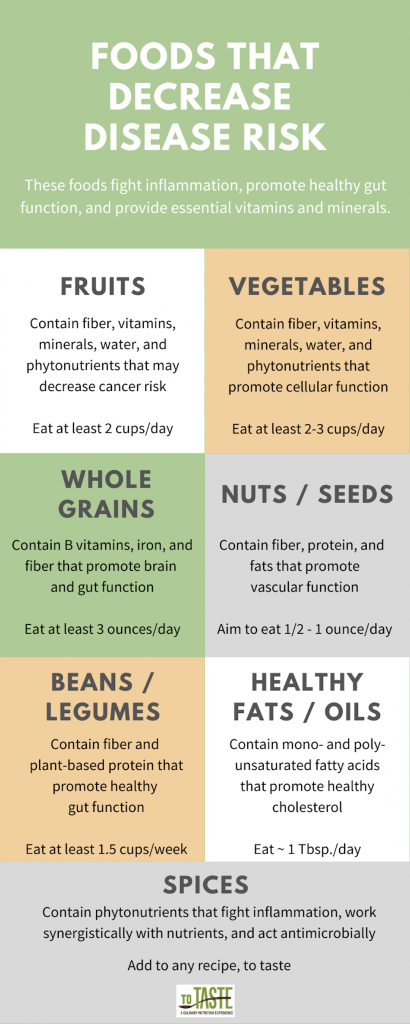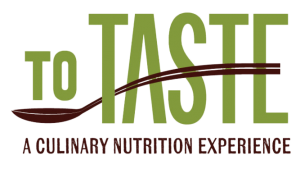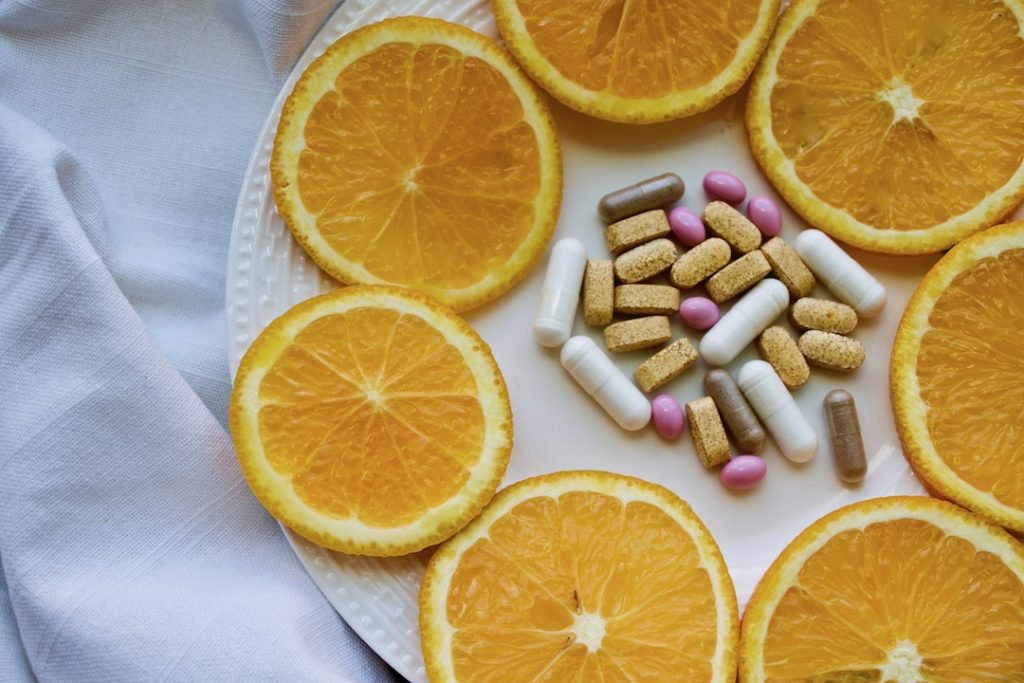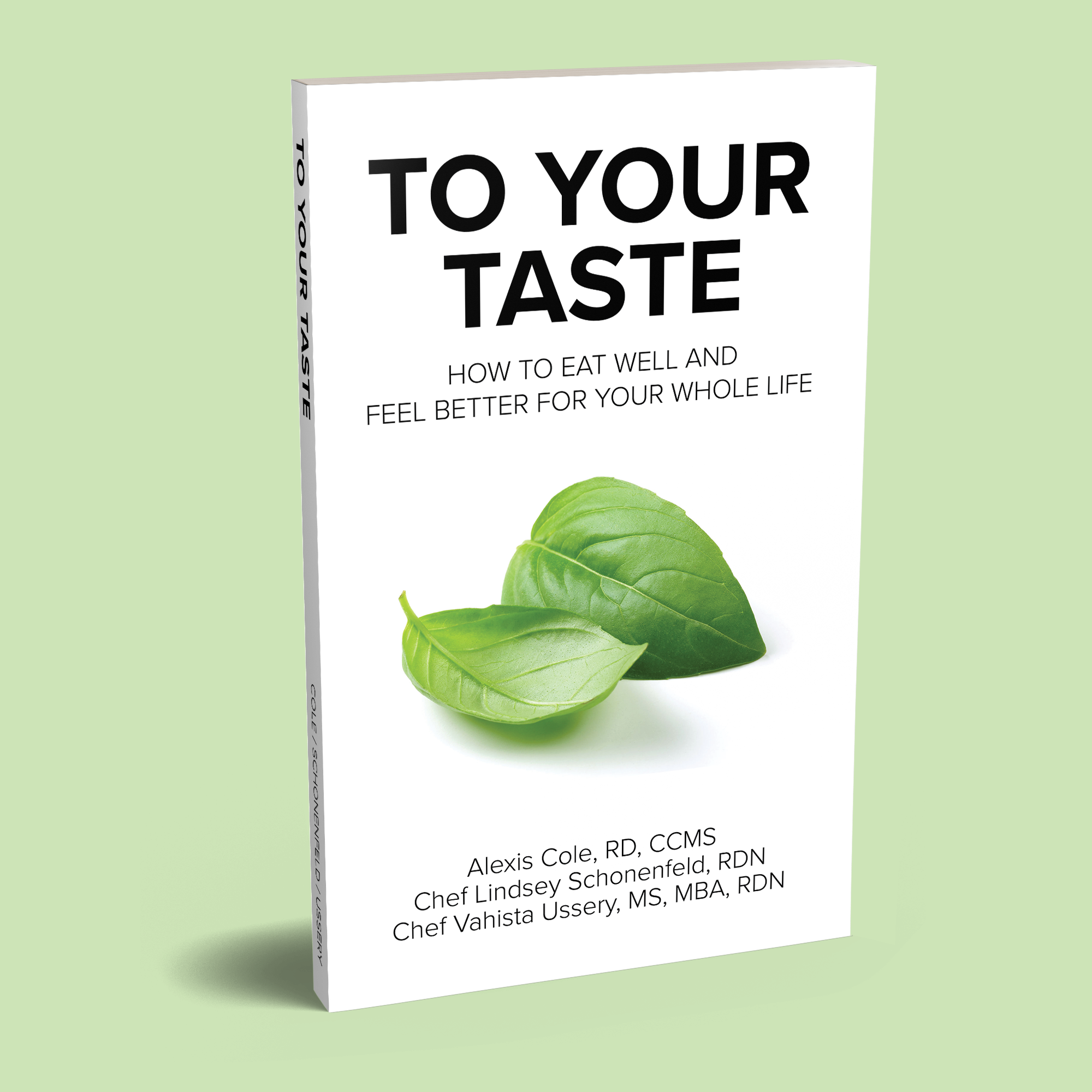“Let food be thy medicine and medicine be thy food.”
Many people attribute this phrase to the ancient Greek physician and father of medicine, Hippocrates. Although there is no actual evidence that he stated these exact words, his teachings and ideologies suggest that he acknowledged the importance of diet in maintaining health and preventing disease. (1, 2, 3, 4) Both Ayurvedic and traditional Chinese medicine date back even farther back then Hippocrates’s time, and similarly viewed this “food as medicine” concept as a component of a balanced body system. (5, 6)
Whether or not ancient physicians or healers prescribed medicinal foods like fruits, herbs, or oils to their patients, using food like medicine was one way to prevent, manage, and treat chronic illnesses. This practice is especially relevant to our health and medical system today.
What is “food as medicine”?
Although there is no established definition of “food as medicine”, it can generally be understood as using diet and nutrition to promote health and decrease risk of disease or illness.
Ancient health practitioners used diet as an integral component of their holistic health approach, but this viewpoint seemed to fade as modern medicine and technologies developed. However, there has been a resurgence in interest in food’s medicinal properties as chronic disease rates have increased over the last several decades. (7)
Similar concepts include culinary nutrition, culinary medicine, and lifestyle medicine.
Culinary medicine is:
“a new evidence-based field that blends the art of food and cooking with the science of medicine” (8)
Over the last several years, there has been increased development of professional training programs, research projects, and individual and community-centered instructional programs that educate healthcare professionals and individuals how to use diet and nutrition as a treatment tool for disease.
Integrating food and medicine in disease treatment can potentially improve patient outcomes. (9)
Why should I use food as medicine?
Increasing Obesity Rates
Obesity rates and the prevalence of chronic diseases in the United States have reached all-time highs. (10) Over the last 50 years, we have seen rates of overweight and obesity nearly triple in the US; 71% of the population falls into one of these two categories. (11, 12, 13)
The World Health Organization acknowledges that obesity is preventable. (14)
Increased Healthcare Spending
Obesity increases the risk of developing chronic illnesses such as heart disease, diabetes, cancer, stroke, and other inflammatory conditions. (15) These conditions cost the healthcare system trillions of dollars every year; 90% of all healthcare spending is used to treat and manage these and other preventable diseases. (16, 17, 18, 19)
There has been a simultaneous national increase in spending on prescription drugs – both out-of-pocket and insurance-covered. (20)
Decreased Food Purchasing
During this same timeframe, we have seen a decline in the average percent of disposable personal income spent on food.
In 1960, the average household spent 16.8% of disposable income on food. In 2018, that figure was down to 9.7%, nearly half of which was spent on food prepared outside the home. (21, 22)
Put simply, as the percentage of Americans’ income spent on food has decreased, obesity, chronic diseases, and medication-spending have increased. Of course, correlation does not equal causation, but there is reason to believe that these statistics are related.
Pay now, or pay later.
When choosing how to spend your hard-earned dollars, it’s best to view your health as an investment – not an expense!
If you have the choice, spend the few extra cents on food now so that you don’t have to pay the hundreds or thousands of dollars on expensive medications, appointments, or surgeries later. (23)
How does food influence health?
From the moment you take a bite to the moment the remnants of that bite leave your body, the foods that you ingest undergo thousands of changes as they travel along your digestive tract.
Your intestines digest and absorb nutrients, and those nutrients provide information to your cells – specifically to your mitochondria and DNA. Your body then undergoes metabolic processes that interpret that information in order to put it to use.
The body is a complex system that relies on accurate information in order to function properly. When the foods you eat lack good information (i.e. nutrient-poor foods), provide the wrong kind of information (i.e. artificial ingredients), or provide too much information (i.e. excess nutrients), your body may begin to malfunction. If there are one or two small glitches of misinformation in the system, your body can most likely handle that. However, if you are constantly overloading your body with poor food information, you are setting it up for malfunction. This will inevitably lead to negative health consequences.
On the other hand, if you provide your body with the kind of information that it is designed to digest, absorb, and metabolize, you have the opportunity to prevent, manage, and even treat chronic diseases.
This “good information” is found in nutrient-dense foods – foods that contain a large quantity of nutrients relative to their weight. These disease-fighting foods are high in vitamins, minerals, fiber, phytochemicals, fiber, proteins, healthy fats, and water. These nutrients nourish your body, help it function efficiently, and protect against chronic illnesses.
What do nutrients in foods do?
- Vitamins: essential, organic compounds found in a variety of foods that promote metabolic and structural processes
- Water-soluble vitamins: thiamin, riboflavin, niacin, pantothenic acid, biotin, pyridoxine, folic acid, cobalamin, Vitamin C
- Fat-soluble vitamins: Vitamins A, D, E, and K
- Minerals: essential, inorganic compounds found in foods that promote metabolic and structural processes
- Major minerals: calcium, phosphorus, potassium, sodium, chloride, magnesium, sulfur
- Trace minerals: iodine, iron, manganese, copper, zinc, chromium, selenium, fluoride, molybdenum
- Phytochemicals: natural compounds that give plants color and provide health benefits beyond basic nutritional contributions. For example:
- Lycopene (red pigment) – watermelon, tomatoes, etc.
- Carotenoids (orange/yellow pigment) – sweet potatoes, mangoes, carrots, etc.
- Lutein (green pigment) – broccoli, spinach, Swiss chard, etc.
- Anthocyanin (red/purple/blue pigment) – purple cabbage, blueberries, red onion, etc.
- Fiber: non-digestible complex carbohydrates found in a wide variety of whole foods
- Stabilize blood sugar, regulate bowel movements, benefit healthy gut bacteria, increase satiety, and promote healthy cholesterol
- Protein: chains of amino acids – create antibodies, maintain blood pH, provide structure, create enzymes, act as hormones, aid cellular growth, balance fluids, transport nutrients, and provide energy
- Healthy Fats: monounsaturated and polyunsaturated fatty acids (specifically omega-3 fatty acids) essential for brain and heart health and absorption of certain vitamins and phytochemicals
- Water: the fluid in which all metabolic processes take place; a normal-weight adult is ~60% water
How can food impact health to prevent, manage, or treat chronic diseases?
You’ve probably heard about the importance of eating a “healthy, well-balanced diet”. An imbalanced diet – too much of some nutrients or not enough of others – increases disease risk.
Foods that Increase Disease Risk
These foods contribute to increased inflammation – a common trait in all chronic diseases. (24, 25)
- Fats/oils high in omega-6 fatty acids: corn, cottonseed, safflower, soybean, and sunflower oils
- Fried food: french fries, fried chicken, donuts, etc.
- Processed meats: bacon, sausage, bologna, hot dogs, pepperoni, jerky, etc.
- Red meat: beef, bison, lamb, goat, and pork
- Salty foods: canned soups, chips, deli meat, frozen entrees, etc.
- Refined sugar: sugar-sweetened beverages, candies, ice cream, etc.
- Refined grains: white bread, white pasta, cakes, cookies, etc.
- Fast food: burgers, milkshakes, tater tots, etc.

Foods that Decrease Disease Risk
These foods are high in vitamins, minerals, phytochemicals, fiber, protein, healthy fats, and water – nutrients that are correlated with decreased risk of chronic diseases. (26) The foods listed below are some examples, but this is by no means an all-inclusive list!
- Fruits: apples, apricots, avocados, bananas, berries, cherries, dates, figs, grapes, grapefruits, kiwi, mangos, melons, oranges, papayas, peaches, pears, pineapples, plums
- Vegetables: asparagus, beets, bell peppers, broccoli, carrots, cauliflower, celery, garlic, kale, onion, radishes, spinach, squash, sweet potatoes, tomatoes, turnips, zucchini
- Whole Grains: amaranth, barley, farro, millet, oats, rye, sorghum, stone-ground corn, quinoa, wheat berries, whole wheat bread, whole wheat pasta
- Nuts: almonds, Brazil nuts, cashews, hazelnuts, macadamia nuts, pecans, pistachios, walnuts
- Seeds: chia, flax, hemp, pumpkin, sesame, sunflower
- Beans/Legumes: adzuki, black, black-eyed peas, butter, cannellini, kidney, lentils, peanuts, pinto, split peas, white
- Healthy Fats/Oils: avocado oil, cold pressed canola oil, extra virgin olive oil, fatty fish (salmon, mackerel, sardines, herring)
- Spices & Herbs: allspice, cinnamon, cloves, ginger, nutmeg, basil, cayenne pepper, chili powder, garlic powder, oregano, paprika, rosemary, thyme, turmeric

It’s important to note that the nutrients in these foods work together synergistically – the vitamins, minerals, fiber, fats, proteins, water, and phytochemicals combined together are what make them beneficial.
Taking a supplement of a single nutrient is more expensive and less effective than getting it from the food itself. (27) Save your money on supplements and spend it on whole fruits and vegetables instead.
Reach for a chef’s knife, chop up those fruits and veggies, make a nourishing meal, and begin to feel the benefits of letting food work like medicine.
If food is medicine, then what should I eat?
Regardless of whether or not you have a chronic illness, we (along with thousands of doctors, scientists, researchers, and nutrition experts) recommend eating a plant-forward diet containing a wide variety of whole and minimally-processed foods: fruits, vegetables, whole grains, nuts, seeds, beans/legumes, healthy fats/oils, and spices.
There is no one specific diet that you must follow in order to maximize health and vitality. However, there are a few eating patterns that are especially effective in preventing and managing diseases. These can serve as helpful guides when navigating your culinary medicine journey.
- Mediterranean Diet: for all individuals. This diet ranks as the world’s best overall diet; the world’s longest–lived people follow this eating pattern and enjoy decades of disease-free lives.
- TLC Diet: for individuals with high cholesterol
- DASH Diet: for individuals with hypertension
How do I start using food as medicine?
At To Taste, we believe that the best way to take control of your health is through cooking.
In fact, cooking at home is associated with a healthier diet. (28)
Here are 4 simple steps to get started using food as medicine:
- View the grocery store or your local farmer’s market as your personal food pharmacy (you might even call it a food farmacy!); choose ingredients that will support your health.
- Bring those foods into your kitchen and find recipes that look and sound delicious.
- Develop fundamental culinary skills so that you can prepare any recipe with confidence and ease. Ready to take your skills to the next level? Enroll in our knife skills 101 course, watch recordings of our past classes, or keep an eye out for future live classes!
- Experiment with new ingredients, flavors, techniques, and recipes so that you can learn to cook according to your taste. Eventually, you will have the knowledge and experience to be able to cook without recipes!
Need some additional support and guidance? Find a dietitian near you that can help individualize an eating plan to your specific needs.
One Important Disclaimer:
If you are currently taking prescription medication, do NOT discontinue taking your current medication without first consulting with your doctor!
Modern medicine has made leaps and bounds in using pharmaceutical agents to manage and treat diseases. Although food can certainly play an important role in managing diseases, it’s not a “cure all” solution. If you wish to go off of medication, develop a safe and practical plan with an interdisciplinary healthcare team; monitor and track any side effects of medication discontinuation.
Want more information on food as medicine?
Check out these helpful resources!
- Dr. Andrew Weil, MD
- The Doctor’s Kitchen
- Food is Medicine Coalition
- Dietitians in Integrative and Functional Medicine
- Mary Purdy, MS, RD
Have a question about how to use food as medicine? We’d love to hear! Leave it in the comments section below.
To YOUR Taste!
Lexi











This Post Has 5 Comments
This is brilliant! Keep up the good work.
Excellent writeup
Thanks for taking the time to read it!
Thanks for the great article Lexi! I’m a personal trainer and health coach with a website and blog trying to teach people how to eat better and take care of their bodies. I’m always looking for more information to back up what I already know but want others to learn. So this article is perfect to pass on to my FB followers!
Thank you so much for your kind comment, Vicki! We are always happy to share evidence-based guidance on how to live a healthy life!